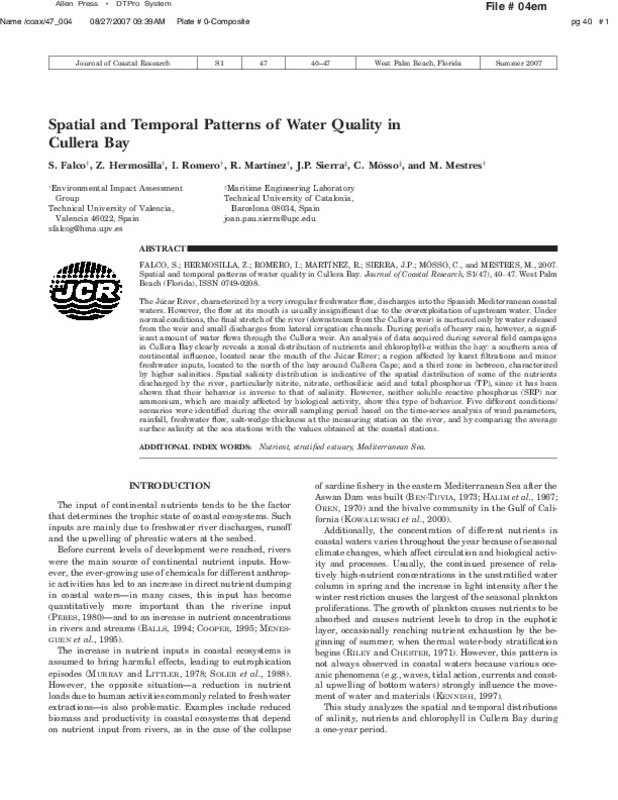JavaScript is disabled for your browser. Some features of this site may not work without it.
Buscar en RiuNet
Listar
Mi cuenta
Estadísticas
Ayuda RiuNet
Admin. UPV
Spatial and temporal patterns of water quality in Cullera Bay
Mostrar el registro completo del ítem
Falco Giaccaglia, SL.; Hermosilla Gómez, Z.; Romero Gil, I.; Martínez Guijarro, MR.; Sierra, J.; Mösso, C.; Mestres, M. (2007). Spatial and temporal patterns of water quality in Cullera Bay. Journal of Coastal Research. SI47:40-47. https://doi.org/10.2112/1551-5036-47.sp1.40
Por favor, use este identificador para citar o enlazar este ítem: http://hdl.handle.net/10251/36181
Ficheros en el ítem
Metadatos del ítem
| Título: | Spatial and temporal patterns of water quality in Cullera Bay | |
| Autor: | Hermosilla Gómez, Zuriñe Sierra, J.P. Mösso, C. Mestres, M. | |
| Entidad UPV: |
|
|
| Fecha difusión: |
|
|
| Resumen: |
[EN] The Júcar River, characterized by a very irregular freshwater flow, discharges into the Spanish Mediterranean coastal waters. However, the flow at its mouth is usually insignificant due to the overexploitation of ...[+]
|
|
| Palabras clave: |
|
|
| Derechos de uso: | Reserva de todos los derechos | |
| Fuente: |
|
|
| DOI: |
|
|
| Editorial: |
|
|
| Versión del editor: | http://dx.doi.org/10.2112/1551-5036-47.sp1.40 | |
| Código del Proyecto: |
|
|
| Agradecimientos: |
This study was financed by the European Union as a part of the ECOSUD project ("Estuaries and Coastal Areas. Basis and Tools for a More Sustainable Development". Reference no. ICA4-CT-2001-10027), AQUAS project ("Water ...[+]
|
|
| Tipo: |
|









